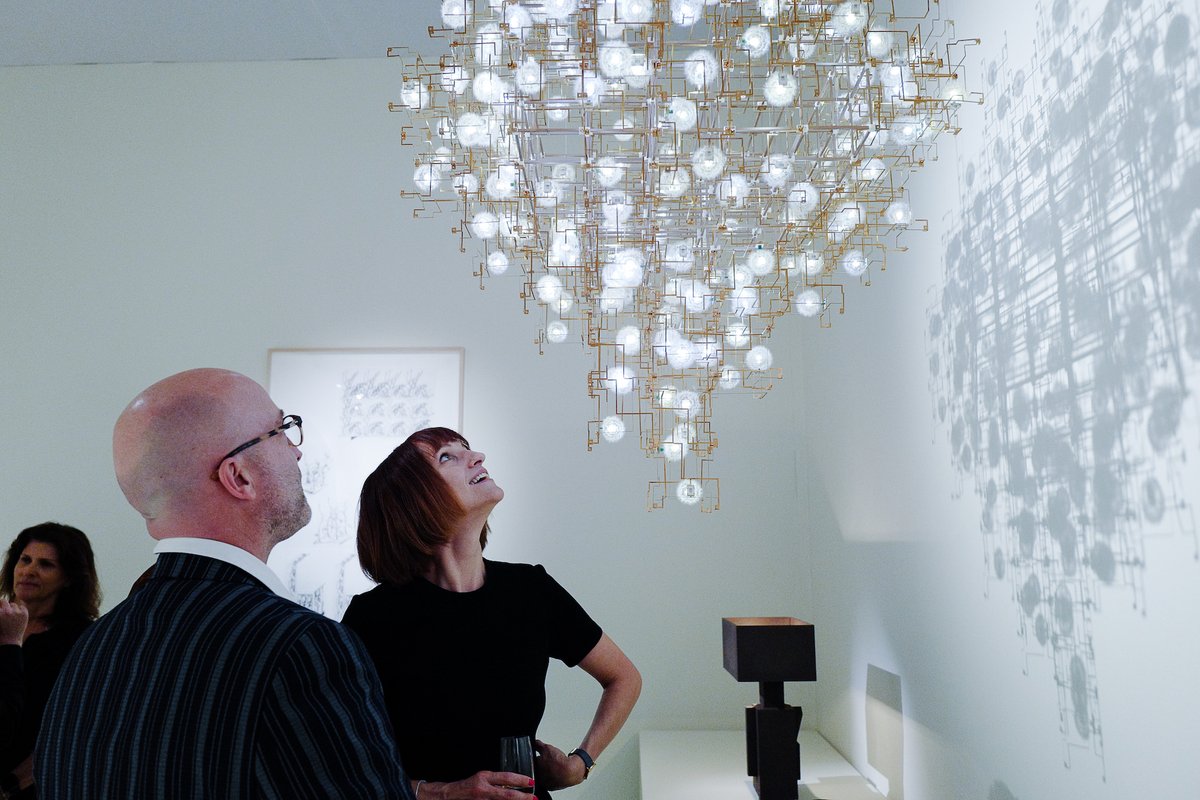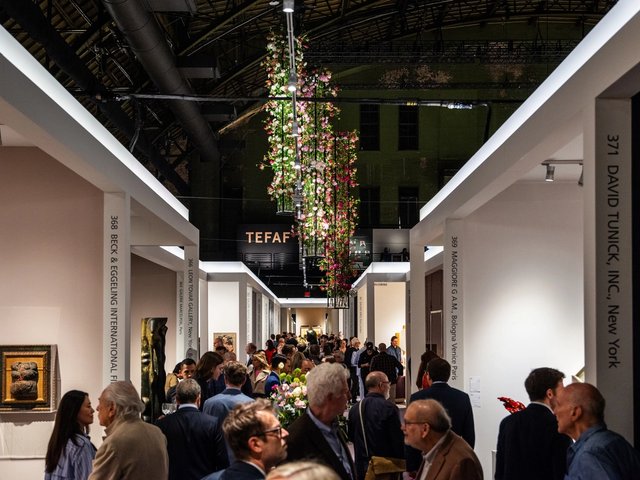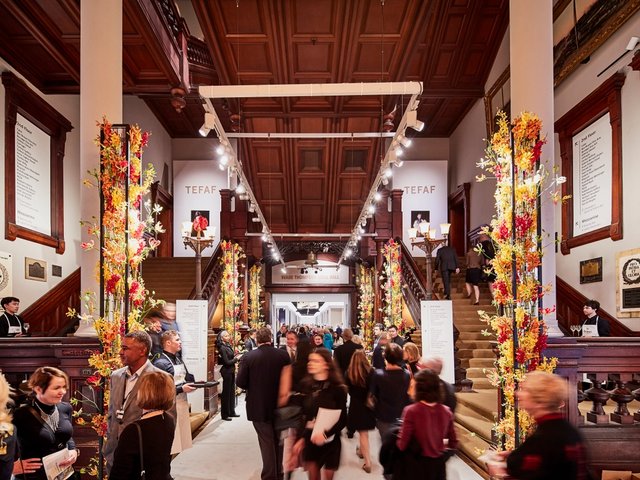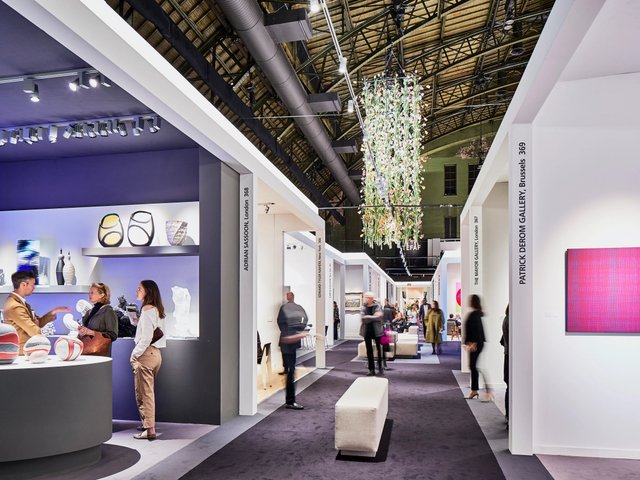“Tefaf New York is quite different than Tefaf Maastricht,” says the furniture dealer Stephane Danant of the French design gallery Demisch Danant. His stand has shown at both editions of the fair since 2015 and he serves on the selection committee for design galleries at the Dutch edition. “At the New York fair, because we are limited, it’s about about having a nice display on the floor and the walls,” he says.
The average stand size of 60 square metres enjoyed by the 270 galleries at Tefaf Maastricht is double that for this year’s New York fair, which is in the historical Park Avenue Armory. The 90 galleries at Tefaf New York (11-16 May) have around 30 sq. m of space each on average. This is especially challenging for the fair’s 15 design-focused galleries, whose directors have to deliberate about every square inch as furniture and objects—as opposed to two-dimensional art on walls—fill the space much faster. “We bring the best of the best for the room, whilst most dealers bring the same for the walls,” says British dealer Adrian Sassoon.
“In Maastricht, you have a bit more room to play with, while in New York, every gallery has to bring their best,” says Will Korner, Tefaf’s head of fairs. “Dealers also usually focus on fewer artists.”
Each team takes a different approach. For Danant, an art fair that values connoisseurship and design is the perfect opportunity to pair his French post-war furniture with historic art on the walls—this year, five large sculptural pieces by the Paris-based American textile artist Sheila Hicks—thereby appealing to a wider range of collectors.

Sheila Hicks, Prayer Rug, around 1966 Courtesy Demisch Danant
“You are side by side with masterpieces from the 16th to the 21st century,” Marc Benda of Friedman Benda says of showing at Tefaf. He believes it is important to have design objects that can have a dialogue with art at that level.
Tefaf this year also features a contingent of design dealers who, instead of sourcing modern or historical objects, have opted to have contemporary works made to debut at the fair. The design mega-gallery Carpenters Workshop commissioned a one-of-a-kind centrepiece for its stand that is sure to draw a crowd.
Showstoppers and grasshoppers
“We’ve been working on it for two years in our atelier,” says Loic Le Gaillard, a partner at the gallery, of the intricately gilded cabinet that the Swedish-French bronze artist Ingrid Donat has created. “That’s the magic of Tefaf New York—people coming with one incredibly strong object that is going to be a complete showstopper.” Priced at $850,000, the large bronze Commode Skarabée (2023) is certain to turn heads. As Le Gaillard sees it, an object with that level of craftsmanship is quite simply art. “We don’t draw a line between art, design, functionality and form, so we absolutely belong amongst these dealers,” he says.
He adds that, even at the highest of price tiers, the gallery was minimally affected by the pandemic and the associated economic slowdown. It is a sentiment echoed by other design dealers. “It was business as usual,” Danant says.
However, design dealers have noted a shift away from contemporary objects towards those with provenance. “Younger generations are increasingly into the story element,” Danant says.
To Benda, what has been most evident since the pandemic is that clients are looking for aesthetic objects that are also functional. “People want the comfort of seats and use of tables over something they can just look at,” he says.
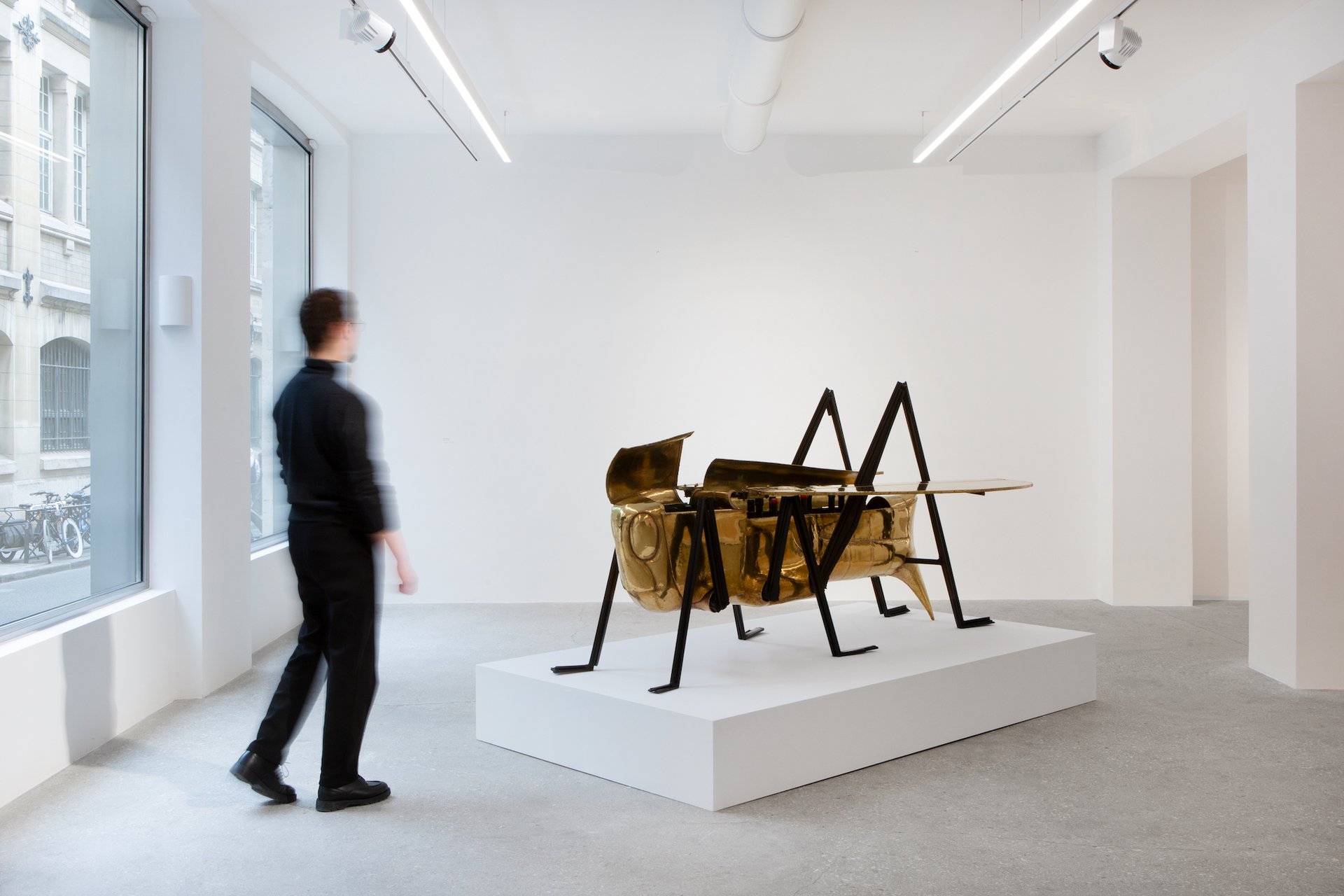
François-Xavier Lalanne, Sauterelle Bar, around 1974 © François-Xavier Lalanne, ADAGP, Paris, 2023. Courtesy the artist and Mennour, Paris. Photo: Archives Mennour
There is much buzz around the gallerist Kamel Mennour and the designer Jacques Granges joining forces to show an object that brings together form, function and storytelling.
They are presenting a recently rediscovered design from around 1974 by the late sculptor François-Xavier Lalanne: a two-metre-long bronze drinks cabinet and bar in the shape of a grasshopper. Only two other editions of the piece are known to exist, one of which belonged to the late Queen Elisabeth II. Given the recent market frenzy around Lalanne’s work, it will likely not take long for a collector to buy the bar.
- Tefaf New York, 11-16 May, Park Avenue Armory, New York


